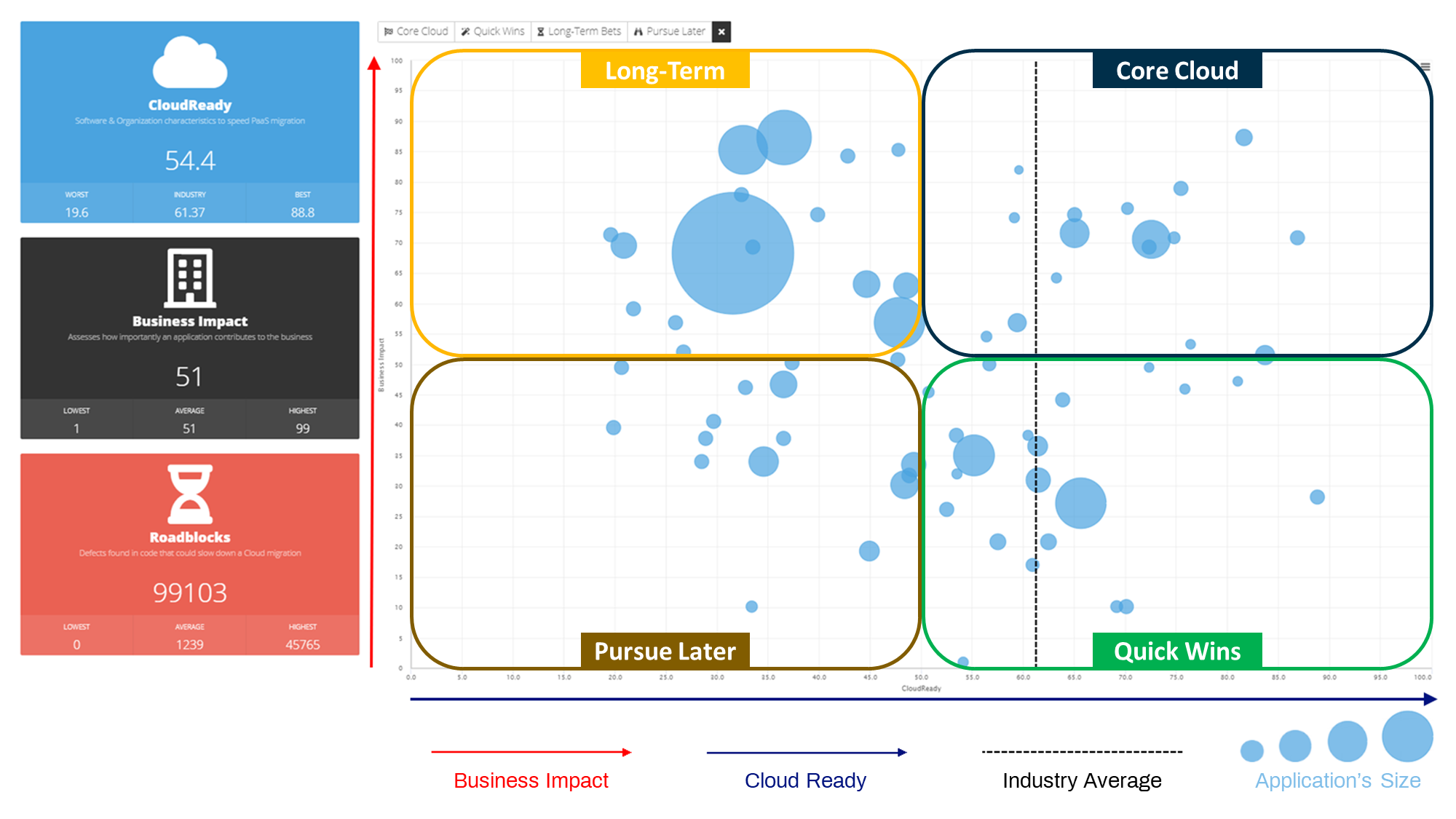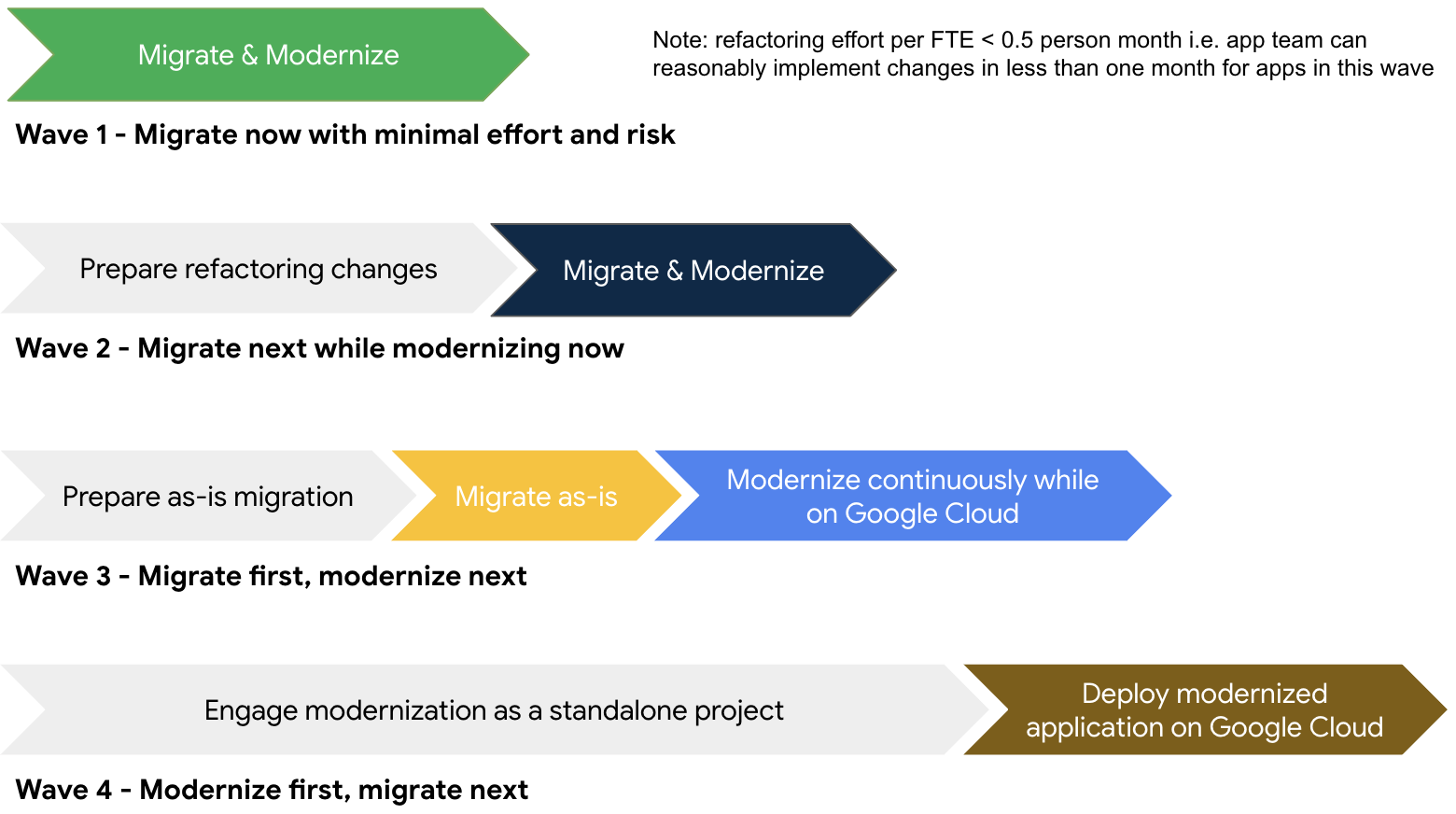Cloud migration offers many benefits, including enhanced scalability, cost-efficiency, improved security, flexibility, and speed. However, to realize the full potential of Google Cloud, one needs a pragmatic approach that allows applications to become cloud-friendly during their migration and throughout their lifecycle on Google Cloud.
Therefore, it is important to build application and workload migration waves that also take into account the internal characteristics and underlying infrastructure of the workloads that you want to migrate.
CAST Software’s CAST Highlight is a software intelligence product that analyzes source code to provide insights into a portfolio of applications. It automatically categorizes all applications in various modernization strategies like rehost, refactor, rearchitect, retire; recommends a migration roadmap; identifies cloud blockers and sizes remediation efforts. It assesses applications on various parameters such as software health, elegance, agility, cloud readiness, technical debt, green impact and resiliency.

In this blog, we outline how to use CAST Highlight to build optimal application migration waves to Google Cloud, for quick wins, modernization, and effective collaboration between cloud competency centers and application teams.
Wave 1- Quick wins: Migrate now with minimal effort and risk
The first wave of the migration to Google Cloud aims to identify and implement quick wins, or low-hanging fruit. These applications, despite being less risky to migrate, can still provide tangible benefits in a relatively short period of time. By focusing on applications with relatively low business impact, high cloud readiness scores, and small refactoring effort, businesses can ensure a smooth transition to Google Cloud in weeks rather than months.
The first wave will also serve as a pilot to test various aspects of the migration process, such as procedures, the selected landing zone, and collaboration between teams. This allows practitioners to familiarize themselves with the process, identify potential challenges, and refine the project plan for subsequent waves.
In other words, the first wave is a way to test the waters and get a feel for the migration process before moving on to larger and more complex applications. This will help to ensure that the migration is successful and that businesses can reap the benefits of Google Cloud as quickly as possible.
Wave 2 – Core cloud: Migrate next while modernizing now
This phase involves a new set of applications with a high impact on the business and a high readiness score for the cloud. During this phase, detailed insights and lessons learned from wave 1 applications are shared with application teams. This gives developers the opportunity to proactively refactor and remediate applications as they assess their cloud readiness with CAST Highlight, rather than undertaking a new project or bringing in a new team.
Wave 3 – Long term: Migrate first, modernize next
In this phase are applications that have a high impact on the company but require a significant amount of money and effort to make them cloud-native. A tactical and immediate move to the cloud for some workloads (e.g., distributed applications like Java, .Net, etc.) is a wise decision, as it allows businesses to quickly reap some of the cloud’s benefits, such as data analytics capabilities, savings on recurring infrastructure costs. Preparation for the as-is move can begin as early as wave 1.
Wave 4 – Pursue later: Modernize first, migrate next
The fourth wave of cloud migration involves applications that need to be modernized before they can be migrated. This is particularly true for applications that fall into the “platform-dependent non-x86” category or have specific data replication challenges. Applications such as mainframe systems, IBM Power, and Oracle SPARC servers can benefit from a custom-fit modernization journey based on application insights from CAST, in order to align with cloud-native architecture and capabilities.

Conclusion
After the initial migrations and modernizations are completed, organizations can focus on the practical aspects of continuous modernization throughout the lifecycle of applications hosted in the cloud, including the use of Google Cloud tools and services for ongoing monitoring and optimization.
Looking to get started? With Google Cloud’s holistic cloud migration and modernization program, Google Cloud RaMP (Rapid Migration Program), you can easily gain insight into your current landscape and estimate the total cost of migration with complimentary assessments from Google Cloud. Get a quick assessment on where you are in your cloud journeyor sign up for a free, more comprehensive assessment of your IT landscape.

